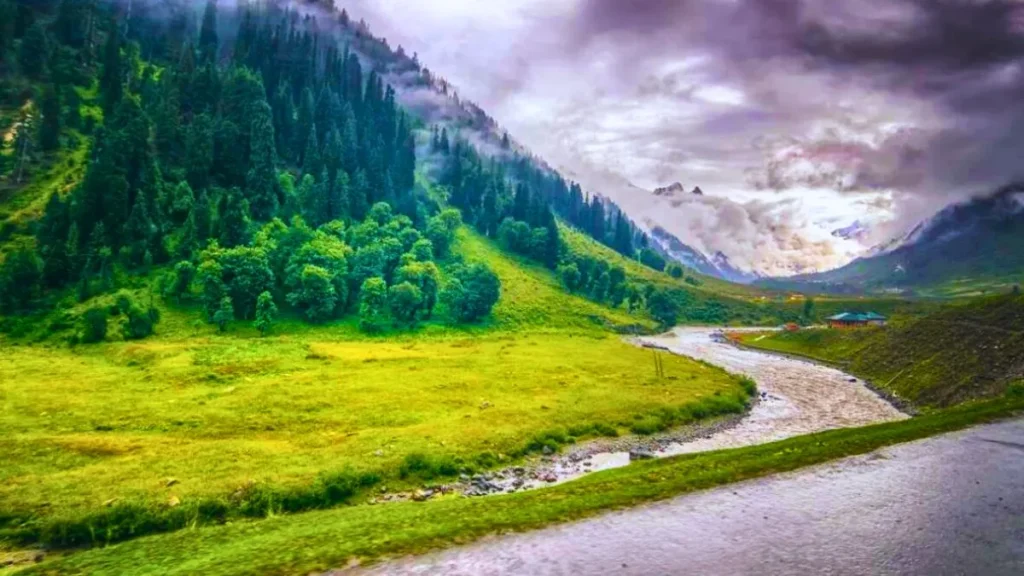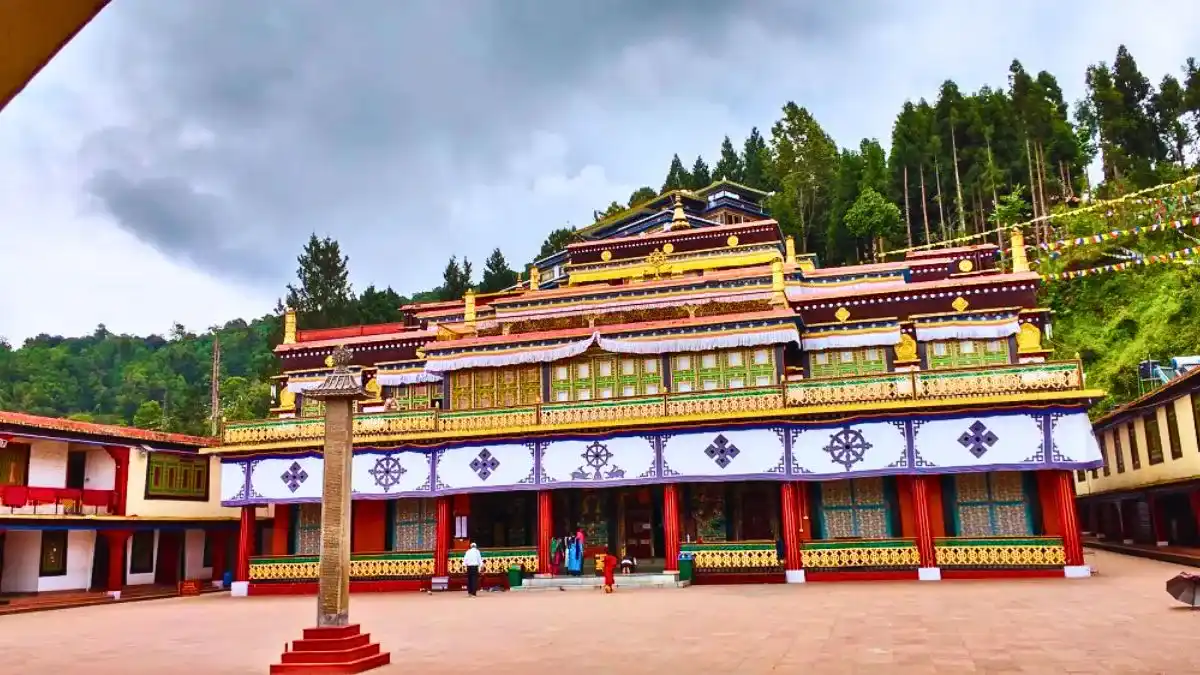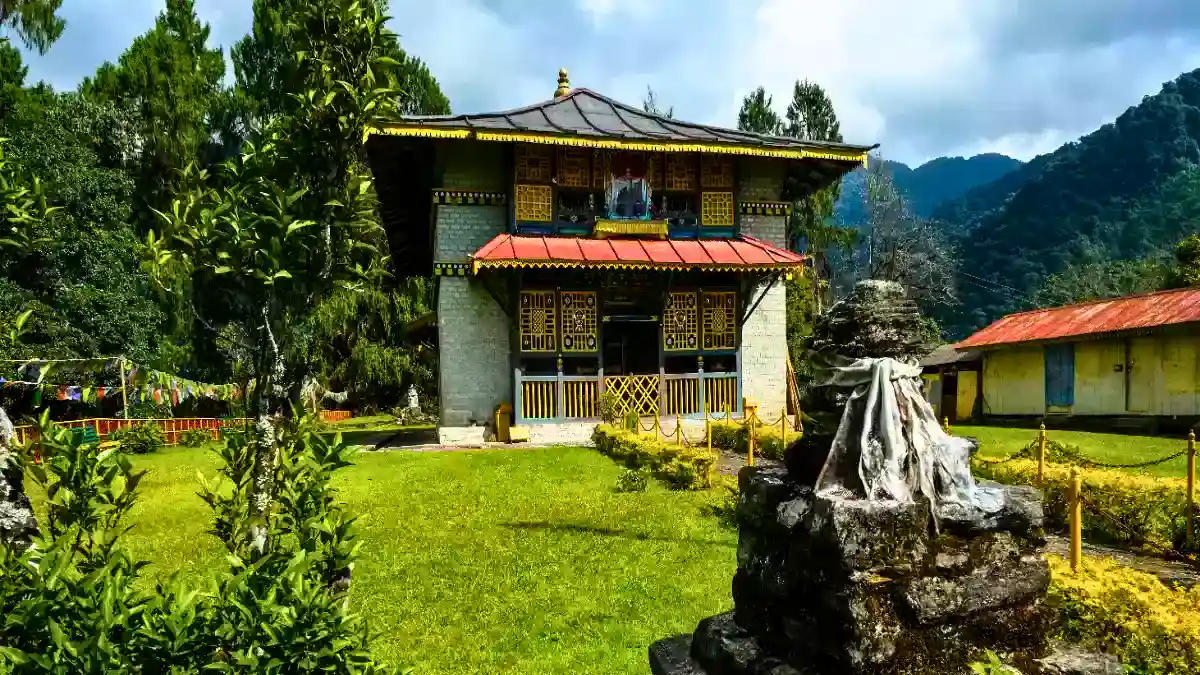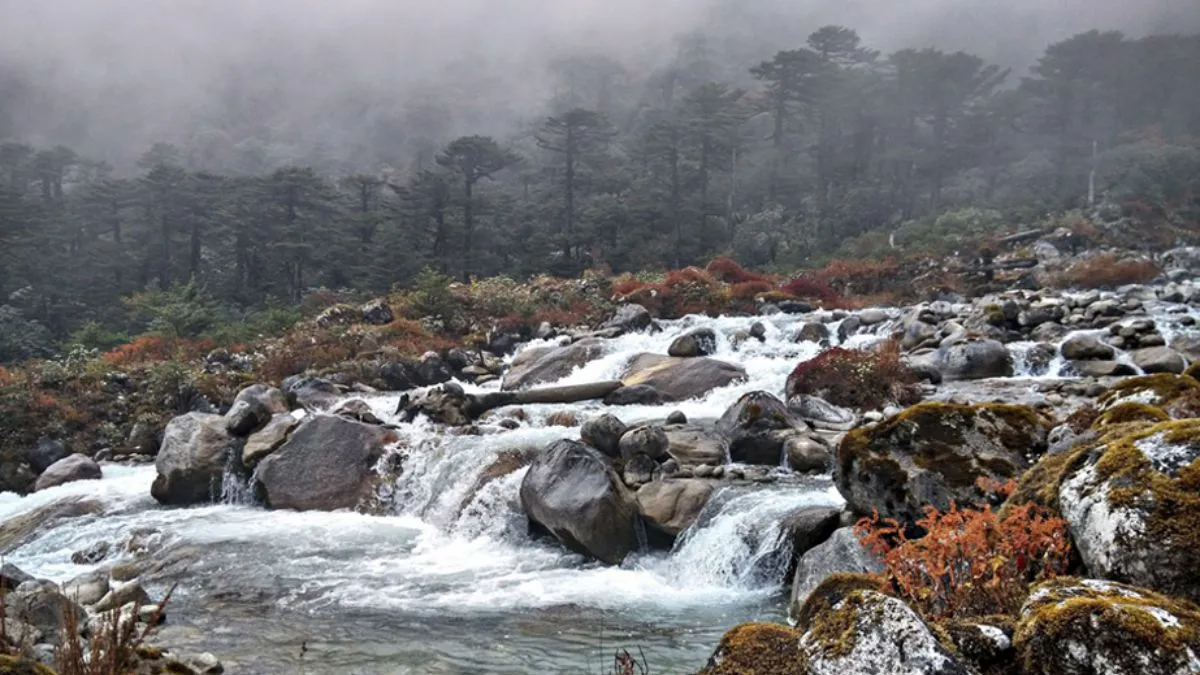Every year, the monsoons give the Sikkim Himalayas a special appeal. When it’s at its best, in July, heavy clouds cover the tops of the mountains, and rain-washed slopes reflect the most vivid greens you’ve ever seen. The Teesta bursts into its flaming magnificence. In little spots here and there, wildflowers blossom while the sky is colored shockingly pink, purple, and orange by sunsets. Most importantly, there is a noticeable drop in the number of visitors. The circumstances are perfect for an enthusiastic traveler who wants to see Sikkim’s magnificence in a whole new light.
The renowned guardian god of Sikkim, Guru Padmasambhava, also happens to be born in July. The celebration, called Tsungkar Tshechu, is widely observed in Sikkim with much fanfare and delight. One of the primary locations for the festivities is the Rumtek Monastery. On the monastery premises, there are special prayers and a captivating Chaam Dance depicting the eight incarnations of Padmasambhava.
Here are The Complete Details on Sikkim Weather in July
The Charms of East Sikkim’s Monsoon
The capital of Sikkim, Gangtok, receives temperatures in July ranging from 17°C to 21°C. Discover the many cafés, bookshops, gift shops, eateries, and pubs on M.G. Marg, the city’s center. The immaculate avenue, replete with Victorian lampposts and fountains, will transport you to a European city. Take a stroll to the Do Drul Chorten, a striking stupa located in the heart of Gangtok that is said to ward off bad spirits. Visit the Namgyal Institute of Tibetology to learn more about the rich history and culture of Sikkim.
In addition to a superb library, it has one of the rarest collections of coins, thangkas, and religious writings. See the opulent monastery of Tsuklakhang Palace. The stunning building, which included a royal chapel, assembly hall, and monastery, was used by the royal family of the former country for coronations, weddings, and other significant events.
Visit the Ridge’s Flower Exhibition Center, which is about 20 minutes away from M.G. Marg. The sheer variety of flowers on show here is sure to astound you. As the monsoon is at its height, be sure to visit the Banjhakri Waterfall. This is the finest time of year to see the waterfall, which is located approximately 7 kilometers from the major city.
You just cannot afford to miss a visit to the renowned Rumtek Monastery, rain or shine. The magnificent three-story structure, which lies 23 miles from Gangtok, is the pinnacle of Tibetan Buddhist architecture. The monastery is home to some of the finest examples of Buddhist artwork, including exquisite thangkas, paintings, and woodwork. It is a part of the Karma Kagyu, or Black Hat sect, of Tibetan Buddhism.
If the weather gods are on your side, you may take a taxi to the fabled 14,000-foot mountain pass known as Nathula, which was once a part of the ancient Silk Road that linked Tibet and India. In July, the temperature stays between a comfortable 8°C and 11°C here. If you are successful in reaching Lake Tsomgo, a glacial lake located en route to Nathula, you just must visit. The lake, which is about a kilometer long and is adored by the community, is reported to change color with the seasons. Indeed, based on these color shifts, local monastery monks are said to make future prophecies.
The Much-Avoided Bleakness of North Sikkim
Despite being some of the most well-liked tourist spots in North Sikkim, Yumthang Valley, Lachen, and Lachung are best avoided at this time of year due to their high altitude. During the monsoon season, the constant rain often causes landslides, which then result in roadblocks.
Beautiful West Sikkim, drenched by rain
Visit Pelling instead to take in West’s beauty. This little hamlet is ideal for a monsoon vacation since it is just 113 miles from Gangtok and has temperatures in July ranging from 18 to 25 degrees. Even though Pelling is only a collection of stores and motels, its location near some of Sikkim’s most popular tourist destinations makes it a great starting point. Pelling is around 32 miles away from the breathtaking Khecheopalri Lake.
The lake, which is encircled by thick trees, is regarded by the locals as a component of the Demazong Sacred Valley. Climb to the historic Rabdenste Ruins to get a flavor of Sikkim’s lengthy past. Rabdenste, the second capital of Sikkim, is home to the historic palace complex, which is now enchantedly in ruins, encased in moss, and tucked away inside a dense chestnut forest.
Rabdentse is within a short distance from the Pemyangtse Monastery. Lhatsun Chenpo, one of the three monks who crowned Sikkim’s first monarch, constructed it in the seventeenth century. When visiting West Sikkim, be sure to stop at the old town of Yuksom. This little village, which is 40 kilometers from Pelling, served as Sikkim’s initial capital and hosted the 1641 coronation of the country’s first Chogyal (king).
The original coronation throne, known as Norbugang, is located in Norbugang Park, a short stroll from the main market. The Dubdi Monastery was founded in 1647 by the Chogyal himself; take a taxi up to it. It is said to be Sikkim’s oldest. Gorgeously designed grounds around the masterfully built monastery. Don’t forget to stop at the on your route from Pelling to Yuksom. The monsoon rains enhance the splendor of an already stunning waterfall. Falls of Kanchendzonga.
The South Sikkim Cloudbursts
Because of its comparatively lower altitude, South Sikkim is another area of the small Himalayan state that is worthwhile visiting during the monsoon season. The south district headquarters, Namchi, is around eight kilometers from Gangtok. Here, the temperature varies from 19°C to 25°C in July. If the clouds don’t block your view, Namchi, perched in a unique location, gives some breathtaking vistas of the Kanchendzonga and the Rangit Valley.
Walk up to Samdrupste Hill, which is a short stroll from the main town and has a manicured park on a hill. It’s difficult to overlook the enormous statue of Sikkim’s guardian god, Padmasambhava. At about 140 feet, it towers over the whole town and is said to be the world’s highest statue of a Buddhist teacher. Situated just above Ngadak Monastery, the Namchi Rock Garden is around 3 kilometers from the main town. During the monsoon season, a diverse range of birds flock to the garden, which is abundant with exotic flowers of all kind.
While July is a great month to visit without the hordes of tourists, it’s best to be flexible with your schedule. Abrupt downpours can result in blockages and landslides. Before going somewhere, make sure you have enough knowledge to avoid any impacted regions and ask the locals for advice after all, they are the ones who know the area best in this situation.
Frequently Asked Question
Is July a good time to visit Sikkim?
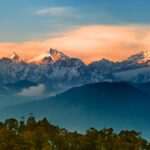
The best season depends on your purpose, but any time of year, except July and August, when heavy rain is prevalent, is suitable for visiting the state.
Can we see snow in Sikkim in July?
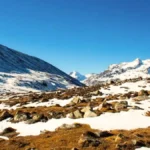
Sikkim gets snowfall throughout the winter months (October to March), with certain areas being snow-covered all year.
What is the average rainfall in Sikkim in July?
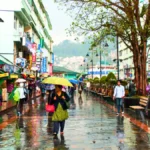
It is the moment when nature awakens from its profound slumber and regenerates. However, the monsoon is characterized by constant rain from May to September, with July being the wettest month. Around 600-700 mm of rainfall occurs.
Can I visit Gangtok in July?

In Gangtok, July marks the start of the monsoon season, when temperatures range from around 18.4C to 23C. Rainfall turns the city’s surroundings into a verdant haven, ideal for those seeking adventure and a close-knit environment.


